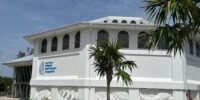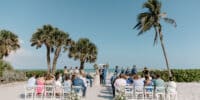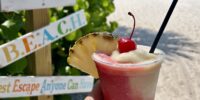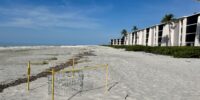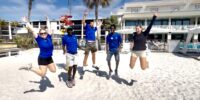Turtle Season 2018 is Here
Sea Turtle nesting season officially begins May 1 and continues through the end of October. The season hasn’t even officially begun and the first nest of the season has already sprung up. The Sanibel-Captiva Conservation Foundation (SSCF) discovered a Kemp’s Ridley nesting site earlier this month. The Kemp’s Ridley Sea Turtle is the smallest and most endangered sea turtle in the world and this is only the third time in the history of the SCCF Sea Turtle Program that this species has nested on Sanibel Island.
Every year in late spring, sea turtles arrive on Sanibel and Captiva for the nesting season. The SCCF Sea Turtle Program surveys 18 miles of beach, from the Sanibel lighthouse to Blind Pass, every morning from April – October. Over 100 volunteers help with the daily search for tracks that the sea turtles leave behind when they emerge from the sea the night before.
Photo credit: Sharri Staggs
Photo Credit: SCCF
In order to prepare for the official start of nesting season, here are a few key facts and tips to keep in mind from the experts at SCCF.
Green Turtle Nest crawl marks from 2017 season.
- Turn off or shield all lights that are visible from the beach. Do not use flashlights or cell phone lights on the beach. If necessary, use amber or red LED bulbs.
- Do not disturb the screens covering nests. They prevent predators from eating the eggs and the hatchlings can emerge through the holes without assistance.
- Remove all beach furniture and equipment from the beach at night.
- Dispose of fishing line properly to avoid turtle entanglement.
- Fill in large holes that can trap hatchlings and nesting sea turtles.
- Do not disturb nesting turtles – please do not to get too close, shine lights on, or take flash photos of nesting sea turtles.
- Pick up litter.
“Sea turtles need dark, flat, and clean beaches to lay their eggs and this truly isn’t possible without community involvement. We are so lucky to live on an island that puts such a strong emphasis on living with nature. The good news is that all of our efforts to keep the coastline pristine appears to paying off – we have had four record breaking nesting seasons in a row on Sanibel. Even more exciting is that last season over 43,000 hatchlings reached the Gulf of Mexico, which is 20,000 more than ever before!” – Kelly Sloan, SCCF
We look forward to another great nesting season and will be doing our part as participants in the Adopt-A-Beach program to make our shores as hospitable and habitable as possible.





